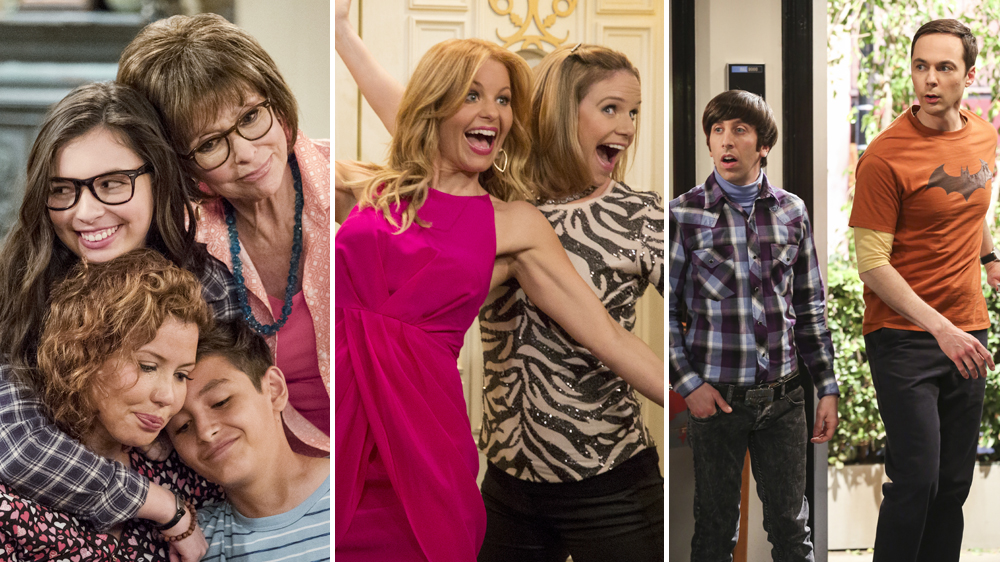Multi-Cams Are Staples of Broadcast TV — Will Streaming Follow Suit?
By Joe Otterson
LOS ANGELES (Variety.com) – Heading into the fall, multi-camera comedies are poised to have their biggest season in years on broadcast television. The Big Four have ordered eight multi-cams among them for the 2018-19 season, up from just four the year before.
The format can trace its roots back to the first days of television, with some of the biggest and most celebrated series in history being multi-cams: “Seinfeld,” “Friends,” “Cheers,” “All in the Family,” “I Love Lucy” among many others.
Yet despite their proven track record, and the fact they are notably cheaper to produce than single-camera comedies, most networks and streaming services outside broadcast have long shied away from multicams.
There are exceptions, of course, including Tyler Perry’s “The Paynes” on OWN or children’s shows on Disney Channel and Nickelodeon. But beyond that, the pickings get slim. Comedy Central, for example, airs no multi-cams. The same for goes for TBS, which has rebranded itself as a go-to destination for cable comedy, and FX, which airs such acclaimed single-cams as “Atlanta” and “It’s Always Sunny in Philadelphia.” Neither Hulu nor Amazon have ever ordered an original multi-cam series.
Why then, at a time when the bottom line for a series has never been more crucial, are those outside broadcast not developing more multi-cams?
According to several TV literary agents who spoke with Variety, they often do not bring multi-cam projects to non-broadcast networks, as they feel they do not fit the brand of those platforms. The other issue, the agents say, is generational. Many young writers are more “excited” by writing single-cams such as “Atlanta” and view multi-cams as old-fashioned.
But Julie Pernworth, executive vice president of comedy development for CBS Entertainment, defends the format.
“I wouldn’t call it old-fashioned,” Pernworth says. “I think that was true back in terms of that cycle when the industry was veering away from multi-cams. More younger writers hadn’t been trained in the craft of multi-camera production. I think that is veering back. I think it depends on the story that is being told, but I think there is something to the idea that younger writers think more in terms of a single-camera vision. I also feel that there’s an influx of writers coming in who you would think would be pitching a single-camera show when in fact they’re really excited about doing a multi-cam.”
Pernworth notes that the model of multi-cams has had success for decades, “going back years to the days of Norman Lear” but also includes more recent series including “Everybody Loves Raymond,” “Two and a Half Men” and “The Big Bang Theory.”
“We do quite well with multi-cams and I think people are just now catching on with how to imitate that model,” Pernworth says of CBS.
One place outside broadcast that has produced several hit multi-cams is Netflix. The streamer found great success with “Fuller House” and the reboot of “One Day at a Time.” In addition, Netflix streams other multi-cams including “The Ranch” and “Alexa & Katie.” Yet all those are fairly recent additions to the Netflix slate, with most of the original comedies it has produced being single-cams, such as “GLOW” and “Grace and Frankie.”
Jane Wiseman, Netflix’s vice president of original series, says developing multi-cams was a definite priority when she came on board.
“[We’re] just getting started, frankly,” she says. “We’re really excited because we know that with 120 million subscribers, we know that millions of people love sitcoms and multi-cams. So that is something that we will continue to do and you will see us ramp up even more in that space.”
But not all of Netflix’s multi-cams have hit the mark. “Disjointed,” which starred Kathy Bates as the owner of a medical marijuana dispensary, boasted Chuck Lorre as an executive producer and writer. It also broke with several multi-cam conventions, adding fake weed-related commercials and including a music-set animation sequence in every episode. Still, the show was cancelled after just one season.
Wiseman said the show was “a really big swing” for Netflix, but ultimately did not have the viewership to support a second season. And while she supported that show’s non-traditional elements, she doesn’t feel it is necessary for a tried and true format like multi-cam to break from convention.
“When it comes to multi-cams, we don’t necessarily need to be breaking tons of traditions,” she says. “It’s all about the relationships. And if you want to play with format or language, or if the writer comes in with some big ideas, we want to support that as long as the relationships and the characters come through. And I think that goes for single- or multi-camera.”
As it stands, “” is one of the biggest shows on television and certainly the biggest multi-cam airing today. But with that show likely going into its final season on CBS, the field is wide open for a new show to make a “Big Bang” of its own.

